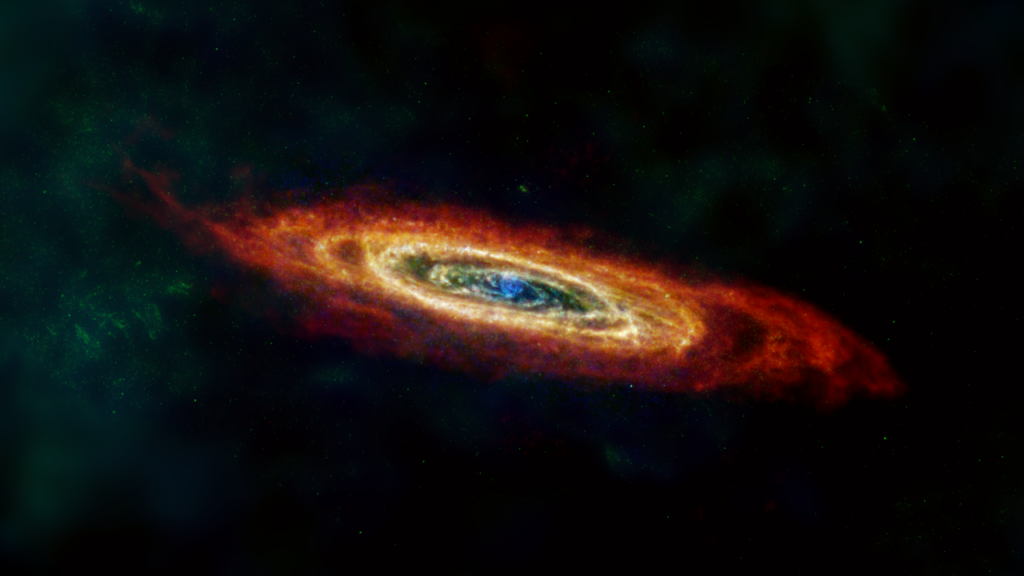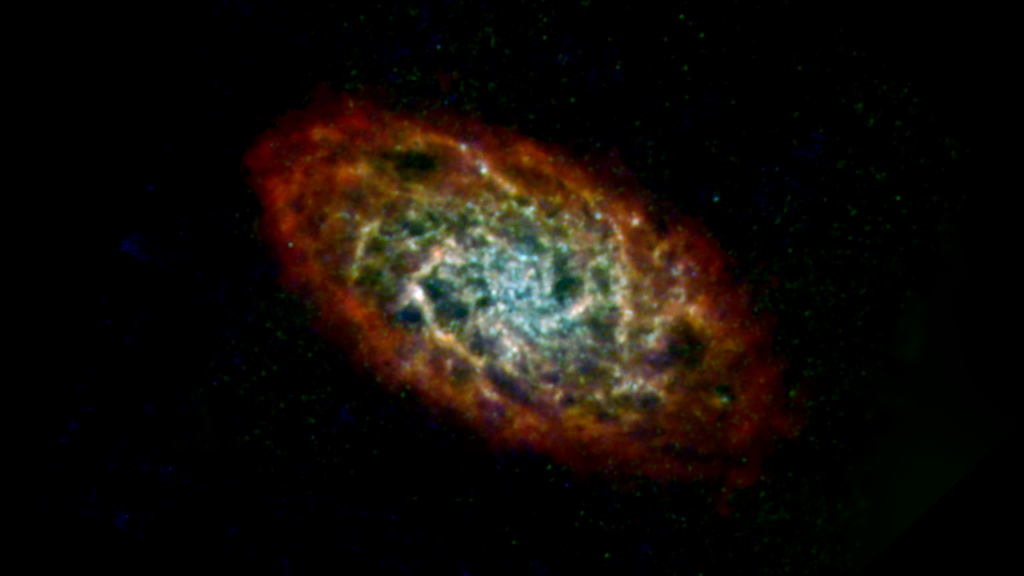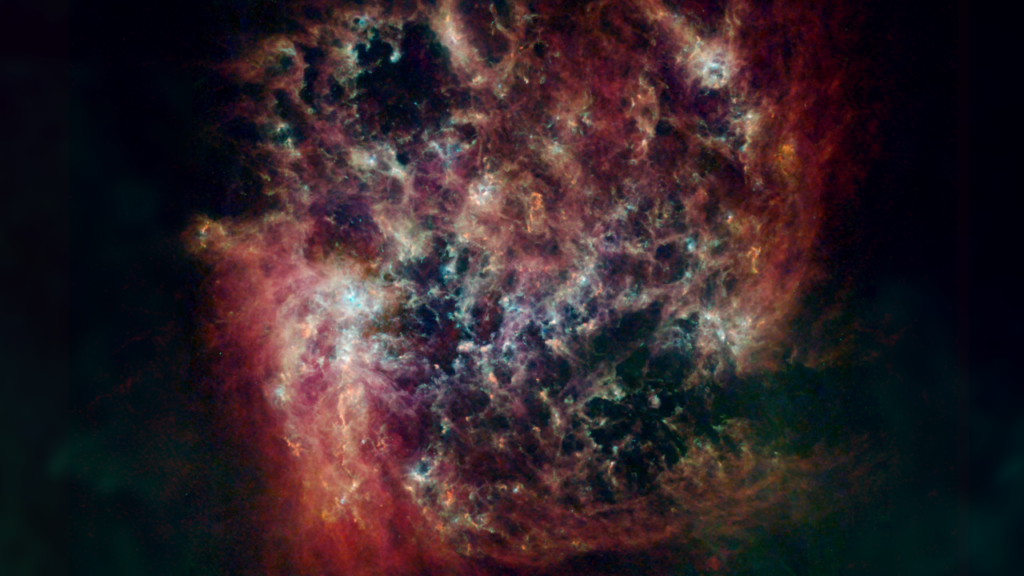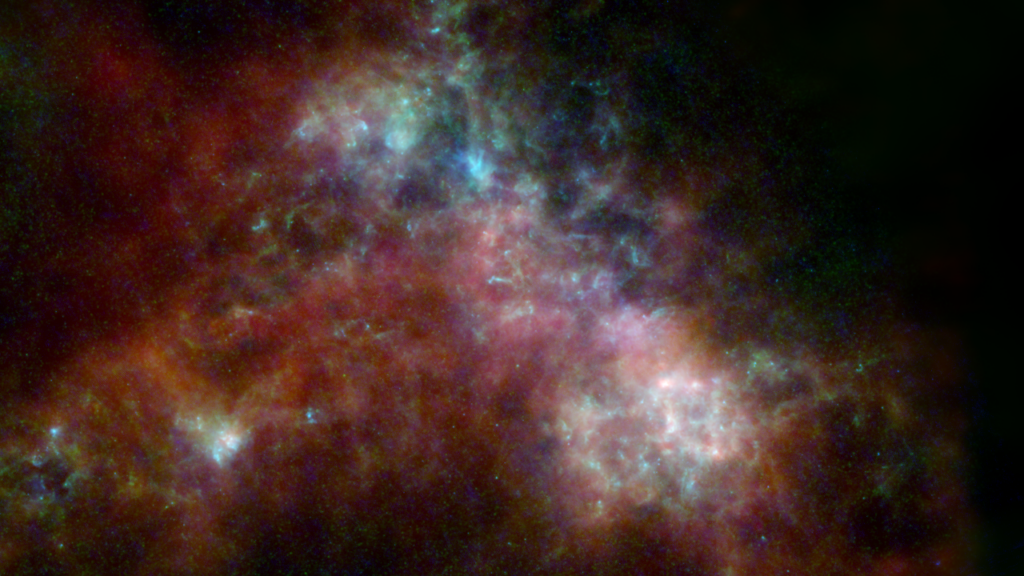NASA and ESA have published images of four galaxies close to the Milky Way. It is demonstrated by the gas-dust clouds filling them. The peculiarity of the images is that they were obtained on the basis of data from space telescopes that have already completed their mission.
Key to the origin of life on Earth
Interstellar space is filled with dust clouds formed as a result of the death of red giants, supernova outbreaks and stellar winds. They contain heavy chemical elements, which are a key component for the formation of stone planets resembling our Earth.

Unfortunately, dust clouds block visible light. Therefore, to study them, astronomers use space telescopes capable of detecting infrared waves that freely pass through dust accumulations. One of them was the European Hershel device, which worked from 2009 to 2013. It collected a rich array of data that is still being analyzed by astronomers.

In a new study, an international team of scientists used the Hershel data archive to study the structures of dust clouds in several neighboring galaxies. The problem was that, due to design features, the telescope often could not detect light from scattered clouds located on the outskirts of galaxies. Therefore, the researchers supplemented its maps with data from three other “retired” space missions: Planck (operated from 2009 to 2013), IRAS (1983) and COBE (1989 – 1993).
Infrared images of nearby galaxies
The collaboration of four telescopes allowed scientists to obtain detailed infrared images of the Andromeda galaxy, the Triangulum galaxy, as well as the Large and Small Magellanic Clouds. The red color corresponds to hydrogen, the most common element in the Universe.

The image of the Large Magellanic Cloud shows a red tail emerging from the lower left side of the galaxy. Apparently, it was formed when it collided with the Small Magellanic Cloud about 100 million years ago.

Bubbles of empty space indicate areas where stars have recently formed: their powerful winds simply “blew away” the surrounding dust and gas. The green light at the edges of these bubbles indicates the cold dust accumulated as a result of these winds. Warmer dust, shown in blue, indicates where stars are forming, or the dust has heated up during some other processes.
According to https://hubblesite.org
Follow us on Twitter to get the most interesting space news in time
https://twitter.com/ust_magazine

